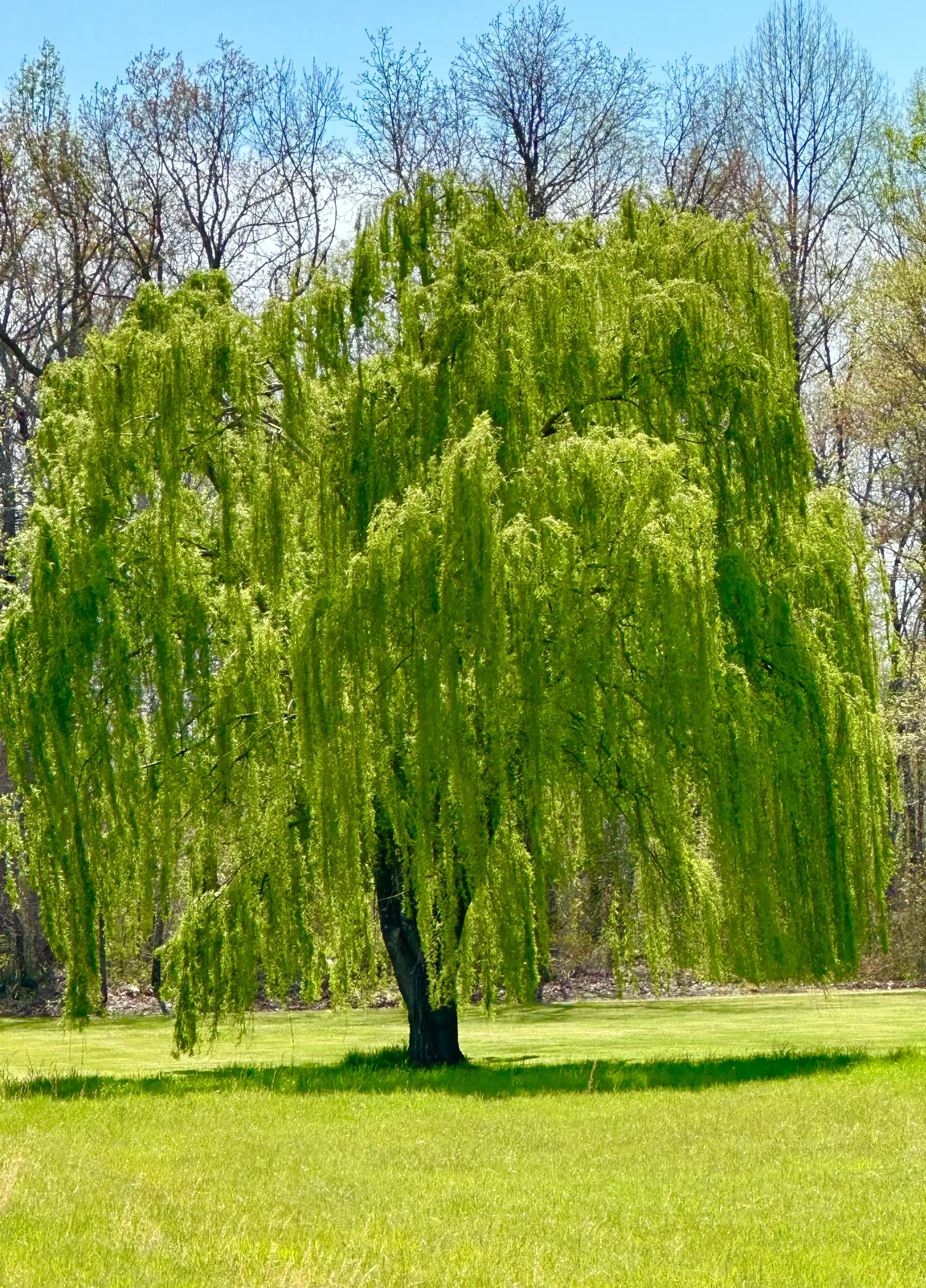
Perennials
Elegant, graceful tree with unique form
Excellent for creating serene landscapes
Great for providing natural privacy screen
Thrives in
ZONE 4ZONE 5ZONE 6ZONE 7ZONE 8ZONE 9Planting Season:
Nov-AprilWhen you add one plant to cart, it automatically adds the second one free on Bogo deals.
The Weeping Willow (Salix babylonica) is an ancient tree of the senses admired for its thin, slender limbs and glossy leaves. This tree grows rapidly and is ideal for creating an idyllic garden or making a statement in any landscape.
These fast-growing trees are easy to plant and grow, making them ideal for beginners and experienced gardeners. They like a well-drained, wet environment and can live in full sun or partial shade. Place the root ball in a hole twice its size, plant the tree, and fill it with soil and water. Once planted, they require very little care other than watering when the weather is dry and occasional pruning to shape or remove dead branches.
They are visually stimulating year-round. The delicate yellow-green flowers bloom in the spring. During the summer, the tree’s graceful, sloping canopy is lined with glossy green leaves, providing cool shade. The leaves turn golden-yellow in the fall and fall slowly off, keeping the classy branching design on display all winter.
The tree is renowned for its familiar cascading form, with limbs falling straight to the ground. They develop quickly, growing to 30-50 feet high and equally wide. If treated well, these trees will survive for many decades as a beloved landscape addition.
Life History of Salix babylonica Trees
TN Nursery grows all types of trees, including the weeping willow, and transports them as fresh, ready-to-plant plants. These trees grow quickly, providing fast-growing trees, stunning beauty year-round and a permanent, quiet presence in your landscape. Add one to your garden today for grace and peace!

Height at Maturity
Over 25 Feet
Care
Weeping Willows thrive in moist, well-drained soil. Water regularly to maintain the soil's moistness. Prune in winter or early spring to release dead or damaged branches and maintain shape. Fertilize yearly in early spring with a proportional fertilizer for optimal growth.
Plant Reproduction
Weeping Willow spreads via wind-dispersed seeds and root suckers.
Plant bare root trees during the dormant season in early spring or late fall (November through April). Dig the hole twice as wide as the roots so the soil is well-drained. Position the tree so the root flare is at or just above ground level. Fill the hole back with the soil you dug from and water. Maintain soil moisture, especially in the tree's early years, by providing deep, regular watering. Apply a 2-4 inch mulch away from the trunk at the base to retain moisture and suppress weeds. Prune trees during the first few seasons to establish strength and resilience, remove damaged branches, and continue maintenance pruning as the tree matures. Regularly inspect for pests and diseases and apply integrated pest management practices. Protect young trees from mechanical damage and extreme temperatures with tree guards, and stake them if necessary for support, removing the stakes after one or two years.
Shipping date depends on the date displayed and chosen when you order from the product's page.
We only accept returns on plants verified dead. If you think your plants have died, we offer a 1 year warranty, please use use this File a Claim Link to verify dead plants and start with return warranty process.




Elegant Cascading Branches:
Weeping Willow’s gracefully draping branches create a stunning, serene focal point in any garden.
Rapid Growth:
This tree grows quickly, providing fast results and immediate impact in your landscape design.
Shade and Privacy:
Its broad, weeping canopy offers excellent shade and natural privacy, perfect for creating a secluded retreat.
Low Maintenance:
Adaptable to various soil types and conditions, the Weeping Willow requires minimal care, making it a hassle-free addition.
Caring Tips
Each box contains detailed care instructions and information about your product. But here's the basics.
Care Tips
Weeping Willows thrive in moist, well-drained soil. Water regularly to maintain the soil's moistness. Prune in winter or early spring to release dead or damaged branches and maintain shape. Fertilize yearly in early spring with a proportional fertilizer for optimal growth.
Light Requirements
Weeping Willow trees thrive in complete sun to little shade, needing at least 4-6 hours of natural sunlight daily. They grow best in bright, open areas but can handle some light shade, particularly in hotter climates.
Hardy Planting Zones
4 • 5 • 6 • 7 • 8 • 9
How often should I water my plants?
How do I know if my plant is getting too much or too little sunlight?
What should I do to prepare my plants for winter?
What are the signs that my plant needs fertilizing?
How can I prevent pests from damaging my plants?
How do I choose the right plant for my climate zone?